
опыт трансформации старопромышленных городов / restructuring
.pdf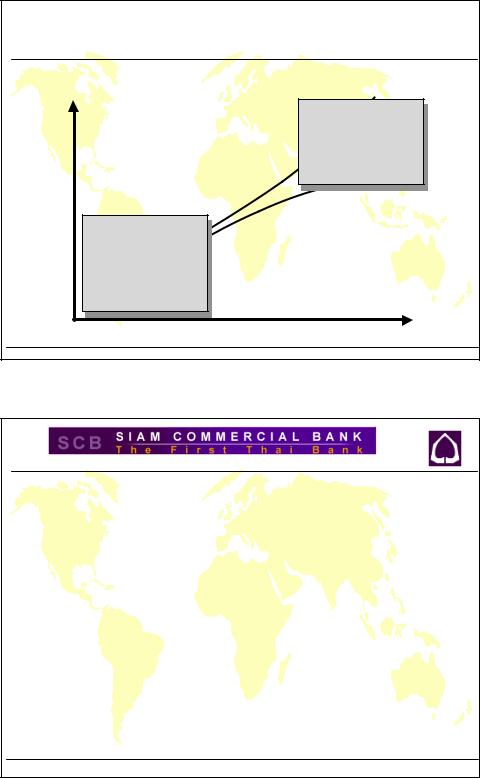
Giddy/Applied Corporate Finance |
Financial Restructuring 11 |
The Financing Spectrum |
|
||
|
|
Equity |
|
|
|
Equity |
|
|
|
n |
Residual returns |
|
|
n |
Residual returns |
|
|
|
after contractual |
|
|
|
after contractual |
|
|
|
claims |
Return |
|
|
claims |
|
n |
Control through |
|
|
n |
Control through |
|
|
|
voting rights |
|
|
|
voting rights |
|
|
|
|
|
Expected |
Senior Debt |
|
|
Senior Debt |
|
||
n |
Returns |
|
|
n |
Returns |
|
|
|
independent of the |
|
|
|
|
|
|
|
|
independent of the |
|
|
|
value of the |
|
|
|
value of the |
|
|
|
business |
|
|
|
business |
|
|
n |
Control through |
|
|
n |
Control through |
|
|
|
covenants |
|
|
|
covenants |
|
|
|
Risk |
|
Copyright ©2002 Ian H. Giddy |
|
www.giddy.org |
Corporate Financial Restructuring 21 |
The Difference
•“The Ministry of Finance received a preferred share while investors received a preferred share and a warrant allowing them to purchase the ministry's share at a 13.3% premium (equivalent to the cost of carry) during a three-year period. The preferred
shares carry a 5.25% dividend and full voting rights” 

• "When institutions started buying the story, they bought the convertible bonds, the sub debt - you name it, they bought it."
•Alternatives: Thai Farmers Bank: SLIPS, Bankok Bank: CAPs
Copyright ©2002 Ian H. Giddy |
www.giddy.org |
Corporate Financial Restructuring 22 |
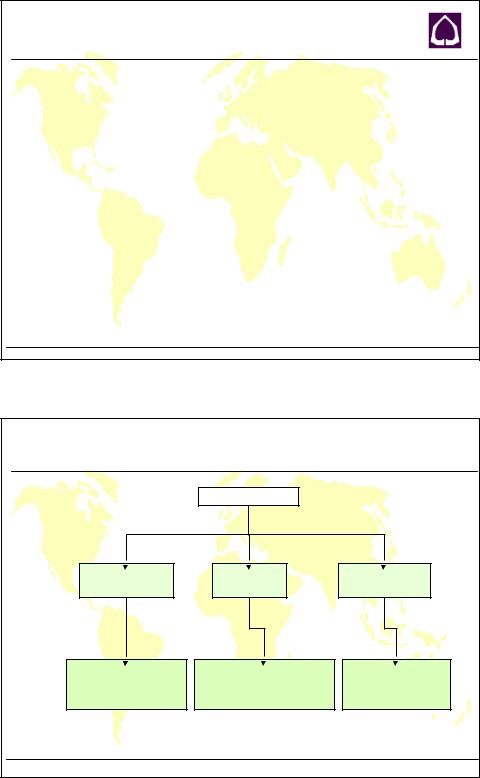
Giddy/Applied Corporate Finance |
Financial Restructuring 12 |
Transparency and Disclosure
•A 275-page prospectus, which provided a breadth and depth of information previously
unseen in an Asian issue.
•"We went and looked back at US bank  holding company offers - those that were US SEC Grade 3 compliant. We also went
holding company offers - those that were US SEC Grade 3 compliant. We also went
back and looked at a lot of the prospectuses  for the recaps of US banks, like Mellon and Citibank. We looked at the level of disclosure they achieved and committed ourselves to
for the recaps of US banks, like Mellon and Citibank. We looked at the level of disclosure they achieved and committed ourselves to  exceeding that -- which SCB did."
exceeding that -- which SCB did."
Copyright ©2002 Ian H. Giddy www.giddy.org Corporate Financial Restructuring 23
When The Creditors are Prowling |
||||
|
|
Time for a Tiger |
|
|
Reason |
The financing |
Business |
The company |
|
is bad |
mix is bad |
is bad |
||
|
||||
Remedy |
Raise equity |
Sell some businesses |
Change control |
|
or |
or assets |
or management |
||
|
||||
|
Change debt mix |
to pay down debt |
through M&A |
|
Copyright ©2002 Ian H. Giddy |
www.giddy.org |
Corporate Financial Restructuring 24 |
||

Giddy/Applied Corporate Finance |
Financial Restructuring 13 |
Case Study: Marconi |
|
|
Copyright ©2002 Ian H. Giddy |
www.giddy.org |
Corporate Financial Restructuring 25 |
The Cost of Capital:
What Returns do Investors Expect?
Index ($)
Small Company
1 0 0 0 0 |
|
Stocks |
|
|
$4,495.99 |
|
|
|
|
|
|
1 0 0 0 |
|
|
|
|
$1,370.95 |
|
|
|
|
|
|
|
|
|
Large |
|
|
1 0 0 |
|
|
Company |
|
|
|
|
Long-Term |
Stocks |
$33.73 |
|
|
|
|
|
||
|
|
Government |
|
$13.54 |
|
1 0 |
|
Bonds |
|
|
|
|
|
|
$8.85 |
||
|
|
|
|
|
|
1 |
|
|
|
|
|
0.1 |
|
Treasury Bills |
Inflation |
Year-End |
|
|
|
|
|||
1925 |
1935 |
1945 1 9 5 5 1 9 6 5 1975 |
1985 |
1995 |
|
Copyright ©2002 Ian H. Giddy |
www.giddy.org |
Corporate Financial Restructuring 26 |

Giddy/Applied Corporate Finance |
Financial Restructuring 14 |
Estimating the Cost of Debt
•If the firm has bonds outstanding, and the bonds are traded, the yield to maturity on a long-term, straight (no special features)
bond can be used as the interest rate.
•If the firm is rated, use the rating and a typical default spread on bonds with that rating to estimate the cost of debt.
• If the firm is not rated,
uand it has recently borrowed long term from a bank, use the interest rate on the borrowing or
u estimate a synthetic rating for the company, and use the synthetic rating to arrive at a default spread and a cost of debt
•The cost of debt has to be estimated in the same currency as the cost of equity and the cash flows in the valuation.
Copyright ©2002 Ian H. Giddy |
www.giddy.org |
Corporate Financial Restructuring 27 |
Interest Coverage Ratios, Ratings and |
||
Default Spreads |
|
|
If Interest Coverage Ratio is |
Estimated Bond Rating |
Default Spread |
> 8.50 |
AAA |
0.20% |
6.50 - 8.50 |
AA |
0.50% |
5.50 - 6.50 |
A+ |
0.80% |
4.25 - 5.50 |
A |
1.00% |
3.00 - 4.25 |
A– |
1.25% |
2.50 - 3.00 |
BBB |
1.50% |
2.00 - 2.50 |
BB |
2.00% |
1.75 - 2.00 |
B+ |
2.50% |
1.50 - 1.75 |
B |
3.25% |
1.25 - 1.50 |
B – |
4.25% |
0.80 - 1.25 |
CCC |
5.00% |
0.65 - 0.80 |
CC |
6.00% |
0.20 - 0.65 |
C |
7.50% |
< 0.20 |
D |
10.00% |
Copyright ©2002 Ian H. Giddy |
www.giddy.org |
Corporate Financial Restructuring 28 |
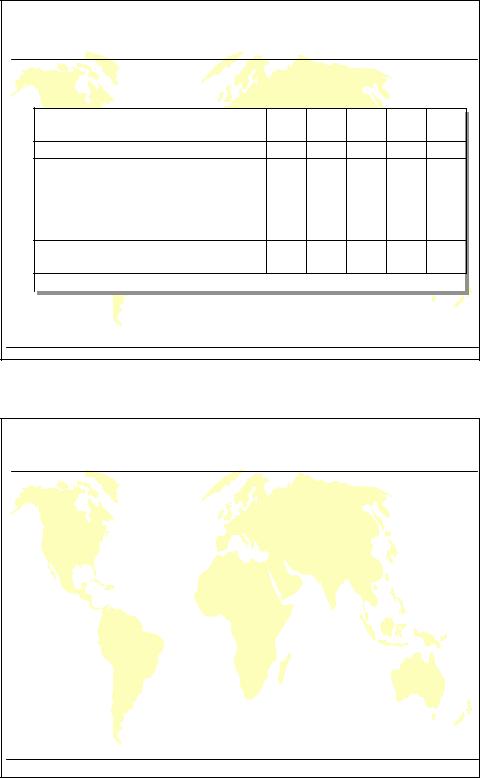
Giddy/Applied Corporate Finance |
Financial Restructuring 15 |
Other Factors Affecting Ratios |
|
|
|
|||||
Medians of Key Ratios : 1993-1995 |
|
|
||||||
Pretax Interest Coverage |
AAA |
AA |
A |
BBB |
BB |
B |
CCC |
|
13.50 |
9.67 |
5.76 |
3.94 |
2.14 |
1.51 |
0.96 |
||
EBITDA Interest Coverage |
||||||||
17.08 |
12.80 |
8.18 |
6.00 |
3.49 |
2.45 |
1.51 |
||
Funds from Operations / Total Debt |
||||||||
98.2% |
69.1% |
45.5% |
33.3% |
17.7% |
11.2% |
6.7% |
||
(%) |
||||||||
|
|
|
|
|
|
|
||
Free Operating Cashflow/ Total |
60.0% |
26.8% |
20.9% |
7.2% |
1.4% |
1.2% |
0.96% |
|
Debt (%) |
||||||||
|
|
|
|
|
|
|
||
Pretax Return on Permanent Capital |
29.3% |
21.4% |
19.1% |
13.9% |
12.0% |
7.6% |
5.2% |
|
(%) |
||||||||
|
|
|
|
|
|
|
||
Operating Income/Sales (%) |
22.6% |
17.8% |
15.7% |
13.5% |
13.5% |
12.5% |
12.2% |
|
Long Term Debt/ Capital |
||||||||
13.3% |
21.1% |
31.6% |
42.7% |
55.6% |
62.2% |
69.5% |
||
Total Debt/Capitalization |
||||||||
25.9% |
33.6% |
39.7% |
47.8% |
59.4% |
67.4% |
69.1% |
||
|
||||||||
Copyright ©2002 Ian H. Giddy |
www.giddy.org |
|
|
Corporate Financial Restructuring 29 |
||||
The Cost of Equity |
|
|
Equity is not free! |
|
|
Expected return = Risk-free rate + Risk Premium |
||
E(RRisky) = RRisk-free -+ Risk Premium |
||
Copyright ©2002 Ian H. Giddy |
www.giddy.org |
Corporate Financial Restructuring 30 |

Giddy/Applied Corporate Finance |
Financial Restructuring 16 |
The Cost of Equity
• Consider the standard approach to estimating cost of equity: 
Cost of Equity = Rf + Equity Beta * (E(Rm) - Rf) where, 
Rf = Riskfree rate
E(Rm) = Expected Return on the Market Index (Diversified Portfolio) 

• In practice,
uShort term government security rates are used as risk free rates
u Historical risk premiums are used for the risk premium
uBetas are estimated by regressing stock returns against market returns
Copyright ©2002 Ian H. Giddy |
www.giddy.org |
Corporate Financial Restructuring 31 |
The Weighted Average Cost of Capital
Choice |
Cost |
1. Equity |
Cost of equity |
- Retained earnings |
- depends upon riskiness of the stock |
- New stock issues |
- will be affected by level of interest rates |
- Warrants |
|
Cost of equity = riskless rate + beta * risk premium |
|
2. Debt |
Cost of debt |
- Bank borrowing |
- depends upon default risk of the firm |
- Bond issues |
- will be affected by level of interest rates |
|
- provides a tax advantage because interest is tax -deductible |
Cost of debt = Borrowing rate (1 - tax rate) |
|
Debt + equity = |
Cost of capital = Weighted average of cost of equity and |
Capital |
cost of debt; weights based upon market value. |
Cost of capital = kd [D/(D+E)] + ke [E/(D+E)]
Copyright ©2002 Ian H. Giddy |
www.giddy.org |
Corporate Financial Restructuring 32 |
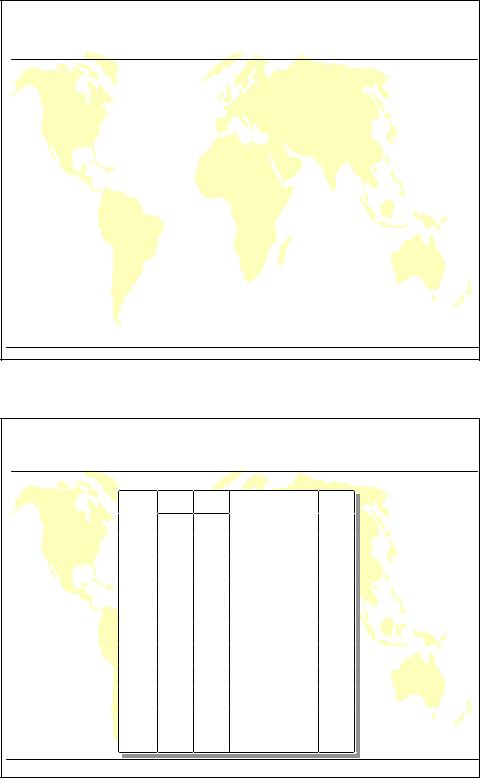
Giddy/Applied Corporate Finance |
Financial Restructuring 17 |
Next, Minimize the Cost of Capital by Changing the Financial Mix
•The first step in reducing the cost of capital is to change the mix of debt and equity used to finance the
firm.
•Debt is always cheaper than equity, partly because it lenders bear less risk and partly because of the tax
advantage associated with debt.
• But taking on debt increases the risk (and the cost) of both debt (by increasing the probability of  bankruptcy) and equity (by making earnings to equity investors more volatile).
bankruptcy) and equity (by making earnings to equity investors more volatile).
•The net effect will determine whether the cost of capital will increase or decrease if the firm takes on
more or less debt.
Copyright ©2002 Ian H. Giddy |
www.giddy.org |
Corporate Financial Restructuring 33 |
This is What We’re Trying to Do |
|||||
D/(D+E) ke |
|
kd |
After-tax Cost of DebtWACC |
||
0 |
10.50% |
8% |
4.80% |
10.50% |
|
10% |
11% |
|
8.50% |
5.10% |
10.41% |
20% |
11.60% |
9.00% |
5.40% |
10.36% |
|
30% |
12.30% |
9.00% |
5.40% |
10.23% |
|
40% |
13.10% |
9.50% |
5.70% |
10.14% |
|
50% |
14% |
10.50% |
6.30% |
10.15% |
|
60% |
15% |
|
12% |
7.20% |
10.32% |
70% |
16.10%13.50% |
8.10% |
10.50% |
||
80% |
17.20% |
15% |
9.00% |
10.64% |
|
90% |
18.40% |
17% |
10.20% |
11.02% |
|
100% |
19.70% |
19% |
11.40% |
11.40% |
|
Copyright ©2002 Ian H. Giddy |
|
|
www.giddy.org |
Corporate Financial Restructuring 34 |
|
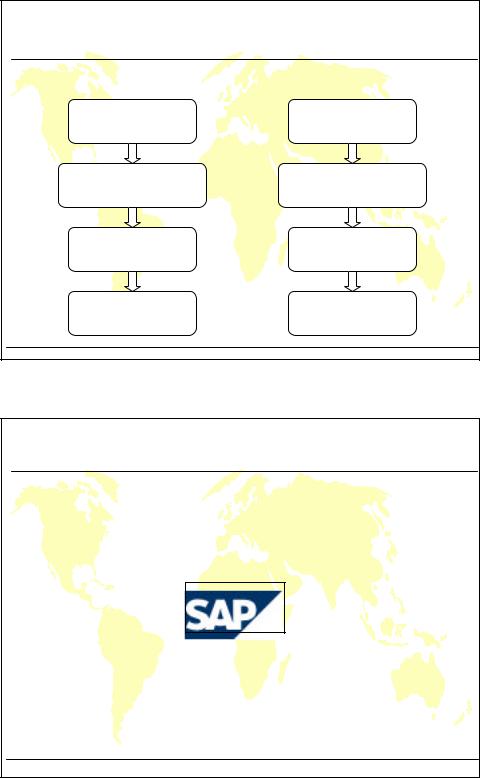
Giddy/Applied Corporate Finance |
Financial Restructuring 18 |
Cost of Capital and Leverage: Method |
||
Equity |
|
Debt |
Estimated Beta |
|
Leverage, EBITDA |
With current leverage |
|
|
|
And interest cost |
|
From regression |
|
|
|
|
|
Unlevered Beta |
|
Interest Coverage |
With no leverage |
|
|
|
EBITDA/Interest |
|
Bu=Bl/(1+D/E(1-T)) |
|
|
|
|
|
Levered Beta |
|
Rating |
With different leverage |
|
|
|
(other factors too!) |
|
Bl=Bu(1+D/E(1-T)) |
|
|
|
|
|
Cost of equity |
|
Cost of debt |
With different leverage |
|
With different leverage |
E(R)=Rf+Bl( Rm-Rf) |
|
Rate=Rf+Spread+? |
Copyright ©2002 Ian H. Giddy |
www.giddy.org |
Corporate Financial Restructuring 35 |
Case Study: SAP |
|
|
Copyright ©2002 Ian H. Giddy |
www.giddy.org |
Corporate Financial Restructuring 36 |
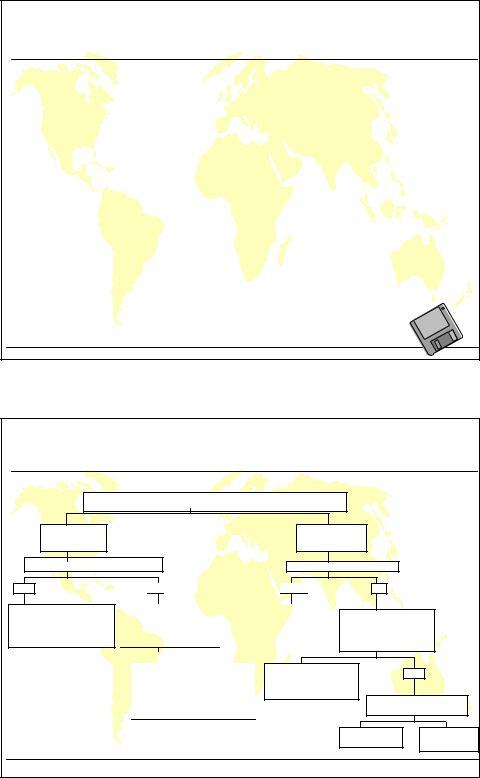
Giddy/Applied Corporate Finance |
Financial Restructuring 19 |
Case Study: SAP
|
|
|
|
|
|
|
|
|
|
|
|
|
|
Interest |
Debt / |
|
|
|
|
|
Interest |
Interest |
coverage |
capitaliz |
Debt/book |
|
|
Debt |
Rating |
rate |
expense |
ratio |
ation |
equity |
|
|
0 |
AAA |
5.65% |
11 |
138.76 |
1% |
0.1 |
|
|
2500 |
AAA |
5.65% |
153 |
10.28 |
7% |
0.7 |
|
|
5000 |
A |
6.37% |
331 |
4.73 |
14% |
1.4 |
|
|
7500 |
A- |
6.56% |
505 |
3.10 |
21% |
2.1 |
|
|
10000 |
B+ |
10.90% |
1,112 |
1.41 |
27% |
2.7 |
|
• Should SAP take on additional debt? If so, how much? 
•What is the weighted average cost of capital before and after the additional debt?
• What will be the estimated price per share after the company takes on new debt?
Copyright ©2002 Ian H. Giddy www.giddy.org Corporate Financial Restructuring 37
A Framework for Getting to the
Optimal
Is the actual debt ratio greater than or lesser than the optimal debt ratio?
Actual > Optimal |
Actual < Optimal |
Overlevered |
Underlevered |
Is the firm under bankruptcy threat? |
Is the firm a takeover target? |
Yes
Reduce Debt quickly
1.Equity for Debt swap
2.Sell Assets; use cash to pay off debt
3.Renegotiate with lenders
|
No |
|
|
|
|
|
Yes |
|
|
|
|
|
|
||||||
|
|
|
|
|
|
|
|
|
|
Does the firm have good |
|
Increase leverage |
|||||||
|
quickly |
||||||||
projects? |
|
||||||||
|
1. Debt/Equity swaps |
||||||||
ROE > Cost of Equity |
|
||||||||
|
2. Borrow money& |
||||||||
ROC > Cost of Capital |
|
||||||||
|
|
|
|
|
buy shares. |
||||
No
Does the firm have good projects?
ROE > Cost of Equity ROC > Cost of Capital
|
|
|
|
|
|
|
|
|
|
Yes |
No |
|
||
Take good projects with |
1. Pay off debt with retained |
|
||
new equity or with retained |
earnings. |
|
||
earnings. |
2. Reduce or eliminate dividends. |
|
||
|
|
3. Issue new equity and pay off |
|
|
|
|
|||
|
|
debt. |
|
|
|
|
|
||
Yes |
No |
Take good projects with
debt.
Do your stockholders like dividends? 

Yes
Pay Dividends No
Buy back stock
Copyright ©2002 Ian H. Giddy |
www.giddy.org |
Corporate Financial Restructuring 38 |
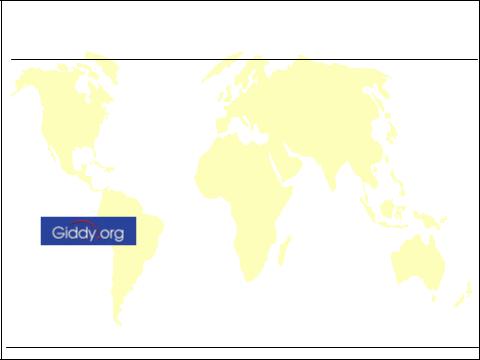
Giddy/Applied Corporate Finance |
Financial Restructuring 20 |
Contact Info |
|
|
Ian H. Giddy |
|
|
NYU Stern School of Business |
|
|
Tel 212-998-0426; Fax 212-995-4233 |
||
Ian.giddy@nyu.edu |
|
|
http://giddy.org |
|
|
Copyright ©2002 Ian H. Giddy |
www.giddy.org |
Corporate Financial Restructuring 42 |
